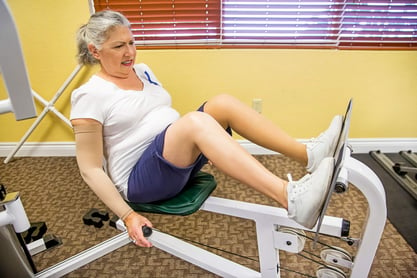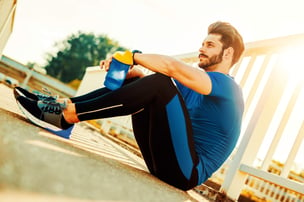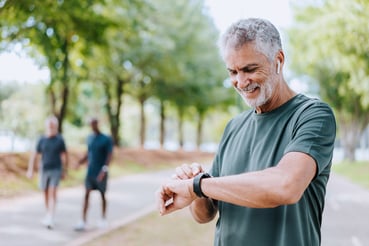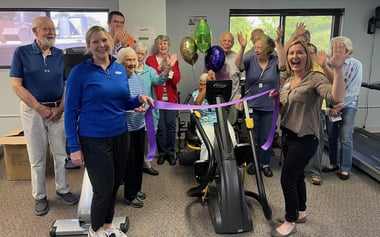 We’ve all heard that staying active as we get older is important, but let's really dig into the key players: what exactly can help prevent hospital visits due to common injuries like osteoporosis-related fractures?
We’ve all heard that staying active as we get older is important, but let's really dig into the key players: what exactly can help prevent hospital visits due to common injuries like osteoporosis-related fractures?
Here's a startling fact from the CDC... every year, more than 300,000 people aged 65 and above end up in the hospital because of hip fractures. Recovery from these fractures can take what feels like ages and often has a negative effect on your independence. Approximately 30-40% of patients resume their prior activity levels.
Now, before you shrug and think, "Okay, that's unfortunate, but it doesn't affect me," let's focus on osteoporosis and its risks. This condition weakens bones, making them fragile and prone to fractures without you even realizing it's happening. It's often referred to as a "silent disease" because it creeps up without symptoms until - boom - you've got a fracture, usually in your hips, spine, or wrists. So, if you're aging (aren't we all?), you're at risk.
But here is the good news: there are some simple exercises that can help prevent the worst of osteoporosis.
Take the leg press, for example. It's a pretty common strength training exercise where you push weight away with your legs against some resistance. The leg press helps to stimulate cells that build bones and boosts bone density.
It is important that you learn proper technique so be sure to reach out to your Fitness Center staff for help. Your Fitness Center staff will teach you proper techniques, frequency, and intensity of exercises, ensuring safety and effectiveness.
Weight-bearing exercises like the leg press don't just help your bones - they also increase muscle strength. Increasing muscular strength also reduces your risk of falling which reduces your risk of fractures. They're like your body's personal bodyguards for your bones, reducing the chances of falls or fractures.
The bottom line is this: weight-bearing exercises, like the leg press, are key when it comes to fighting off osteoporosis. Regularly getting into these workouts can help strengthen your bones, increase your strength, and keep you healthier.


 Walking is a simple act that can have some impressive health benefits. Most of us walk to get from one place to another but let’s use this daily activity to feel better and take care of ourselves. Walking requires no special equipment or training, making it incredibly accessible to people of all ages and fitness levels. Whether you live in a city or a quiet suburban neighborhood, you can easily incorporate walking into your routine. Tailor your walking workouts to suit your schedule and preferences. Whether it's a brisk walk during your lunch break or a leisurely stroll after dinner, the flexibility and convenience of walking make it a sustainable exercise option for long-term health and fitness. Here are three reasons why walking should be prioritized in your fitness regimen.
Walking is a simple act that can have some impressive health benefits. Most of us walk to get from one place to another but let’s use this daily activity to feel better and take care of ourselves. Walking requires no special equipment or training, making it incredibly accessible to people of all ages and fitness levels. Whether you live in a city or a quiet suburban neighborhood, you can easily incorporate walking into your routine. Tailor your walking workouts to suit your schedule and preferences. Whether it's a brisk walk during your lunch break or a leisurely stroll after dinner, the flexibility and convenience of walking make it a sustainable exercise option for long-term health and fitness. Here are three reasons why walking should be prioritized in your fitness regimen.
 When it comes to athletic performance and recovery, one advancement in recent years has been compression clothing. From professional athletes to fitness enthusiasts, compression garments have become a staple in many wardrobes. But what exactly is the science behind compression clothing, and how does it impact our bodies during exercise and recovery? Let's dive in and explore the world of compression wear.
When it comes to athletic performance and recovery, one advancement in recent years has been compression clothing. From professional athletes to fitness enthusiasts, compression garments have become a staple in many wardrobes. But what exactly is the science behind compression clothing, and how does it impact our bodies during exercise and recovery? Let's dive in and explore the world of compression wear. Improving your running time and efficiency can seem overwhelming. Whether you are a beginner or well-seasoned runner there is always room for performance improvement.
Improving your running time and efficiency can seem overwhelming. Whether you are a beginner or well-seasoned runner there is always room for performance improvement. Westminster Village of Terre Haute
Westminster Village of Terre Haute